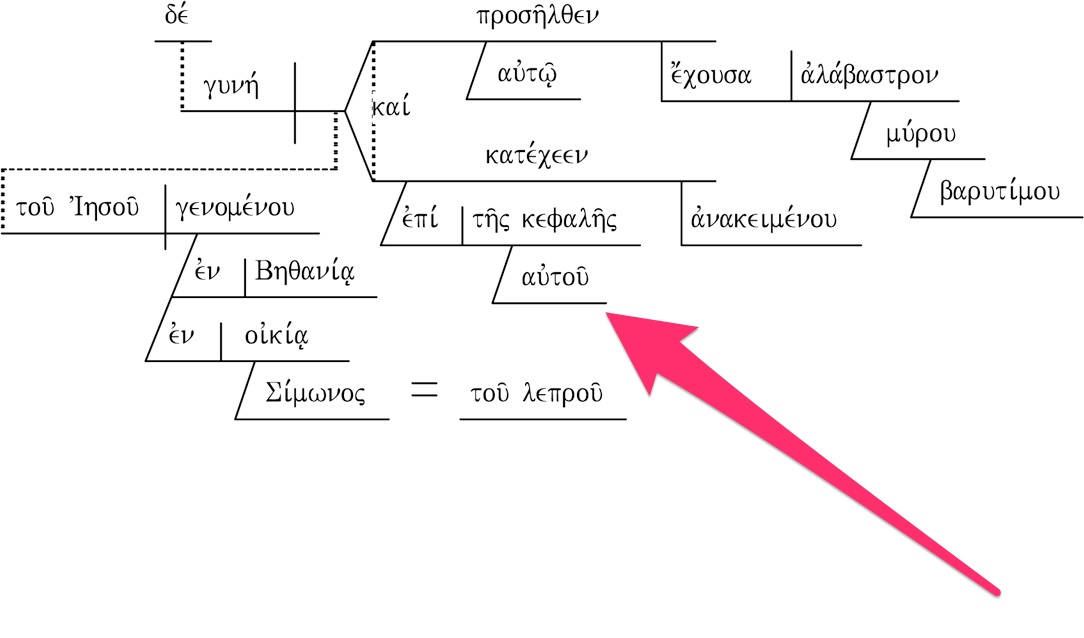Sometimes I have too much fun. The title of this post harkens back to hearing students of Sunday School say that “Jesus!” was the correct answer to any question asked of students in Sunday School. No matter what the question was, if someone answered “Jesus!” he or she had a pretty good chance of answering correctly.
In recent years, I have seen students who have treated the response “Genitive Absolute!” in the same way. Frequently, when I point students to a string of words in a Greek text and ask them to tell me what is going on, the correct answer is “Genitive Absolute!” That is not the only question I ask students, but I have actually heard students say, “Whenever he asks a question about the Greek, the answer is ‘genitive absolute’,” to which I respond, “No!”
My students also know that (particularly in the narrative portions of the New Testament) I like to highllight what most recent grammars call the attendant circumstance usage of the adverbial participle. (My professors, following J. Harold Greenlee, preferred the term coordinate circumstance to attendant circumstance. Greenlee reserved the term attendant circumstance for a slightly different construction.)1
So . . . I am usually keen on finding examples of genitives absolute2
A couple of days ago, I wrote a little piece about rapid reading of the GNT, as compared to decoding the text by deeper analysis. I really do enjoy both approaches—I like to read the text, advancing as quickly as I can, but I also enjoy the analysis. The GNT portion assigned today by the Greek & Hebrew One-Year Bible Reading Group included Matthew 26:1-25. As I read the text, I noticed some instances of genitives absolute:
- Τοῦ δὲ Ἰησοῦ γενομένου (26:6)
- Ὀψίας δὲ γενομένης (26:20)
- ἐσθιόντων αὐτῶν (26:21)
are clear examples. There is another structure in the text, however, which several authorities also label as genitive absolute: προσῆλθεν αὐτῷ γυνὴ ἔχουσα ἀλάβαστρον μύρου βαρυτίμου καὶ κατέχεεν ἐπὶ τῆς κεφαλῆς αὐτοῦ ἀνακειμένου.3
It may indeed be an example of the genitive absolute with αὐτοῦ functioning as the genitive noun/pronoun as the subject of the genitive participle ἀνακειμένου. However, I am not convinced.
Daniel Wallace defines a genitive absolute semantically in this way:4
- This construction is unconnected with the rest of the sentence (i.e., its subject—the genitive noun or pronoun—is different from the subject of the main clause);
- the participle is always adverbial (circumstantial) or, at least, dependent-verbal (i.e., it cannot be an adjectival or substantival participle);
- the participle is normally (about 90% of the time) temporal, though it can on occasion express any of the adverbial ideas.
Now, my basic contention, and the reason not to consider this as a genitive absolute construction is this. The genitive pronoun αὐτοῦ may indeed be connected to the rest of the sentence. It is possible that the αὐτοῦ is functioning merely as a genitive of possession, i.e, his head, in which case, it is part of the main sentence. If that it the case, the genitive participle ἁνακειμένου is merely a temporal participle which is part of the main sentence.
That is how Randy Leedy diagrammed it5:

Now, granted, I understand that ἐπὶ τῆς κεφαλῆς could be rendered upon his head (without the presence of the pronoun αὐτοῦ), but since the pronoun is present, I prefer to see it as a genitive of possession, with the adverbial (temporal) participle ἀνακειμένου functioning as an adverbial participle, but NOT as a genitive absolute.
I am aware of Decker’s acceptance of Culy’s statement that all adverbial participles are in the nominative, making all participles from the oblique cases adjectival6, but I am not convinced by that argument.
Am I unwilling to learn new things? I think not. I am open to what you might show me. At any rate, reading Greek is fun. Hopefully my students will catch the bug. Enough of Covid contagion. Let’s get our Greek on!
- Greenlee, J. Harold. A Concise Exegetical Grammar of New Testament Greek. Fifth Edition Revised. (Grand Rapids: Wm. B. Eerdmans, 1996), pp. 57-58. Note: the first edition of that text that I personally used as a student was the Third Edition Revised, 1963. [↩]
- my mother was a stickler for following prescriptive grammar rules, and though she struggles with memory issues, it is amazing to me that she has not lost her grammatical acuity—I call the plural of this construction by the proper term genitives absolute than what others might term genitive absolutes (sic). [↩]
- Olmstead, Baylor Handbook on the Greek New Testament; Quarles, Exegetical Guide to the Greek New Testament; Bivin & Tilton, LOY Excursus: The Genitive Absolute in the Synoptic Gospels. [↩]
- Wallace, Daniel. Greek Grammar Beyond the Basics, Grand Rapids: Zondervan, 1996, p. 655 [↩]
- Leedy, Randy A. Greek New Testament Sentence Diagrams. Randy Leedy, 2020. [↩]
- Decker, Rodney. Reading Koine Greek, (Grand Rapids: Baker Academic, 2014), p. 391, citing Culy, Martin. “The Clue Is in the Case: Distinguishing Adjectival and Adverbial Participles,” Perspectives in Religious Studies 30.4 (2003): 441-53 [↩]